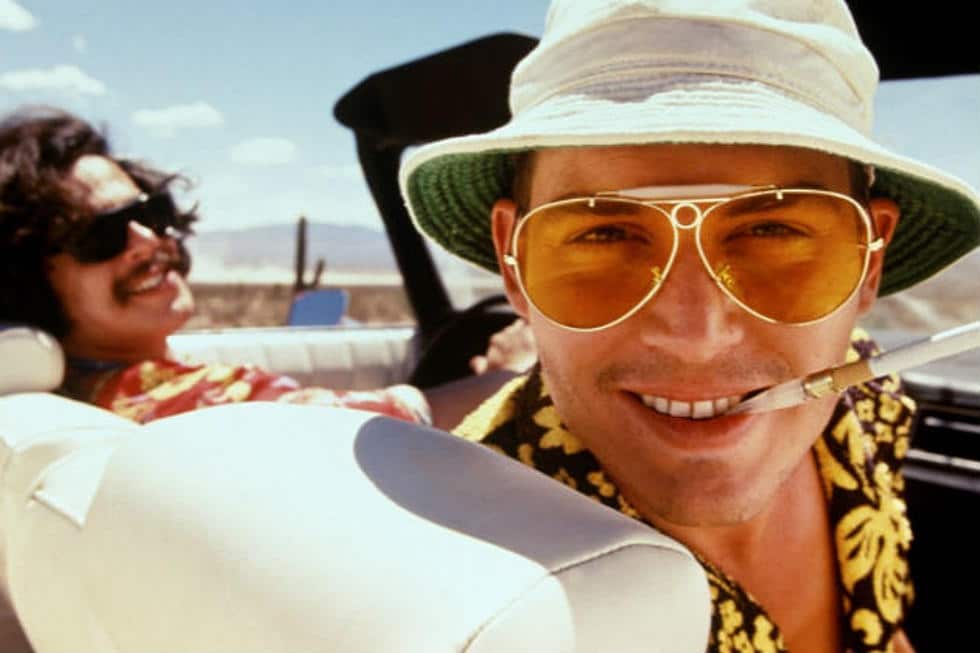“I never believed in LSD but I understood the power of it. It was more than the holy ghost, and more than Jesus, and even more than the federal government. Yeah, it was a powerful source. A little bit like witchcraft, maybe.”
Hunter S Thompson wasn’t one to shy away from substances. But even he recognised the enormity that this pandora’s box of a drug represented.
A groundswell of public interest is building around a subset of hallucinogenic drugs whose primary effect is to trigger non-ordinary states of consciousness. Why? Because human beings are evolving. Because we’re curious by nature, and, because there’s been enough time between now and the 70s for society to shed its preconceptions and reset its expectations around what constitutes ‘medicine’.

“Taking LSD was a profound experience, one of the most important things in my life,” Steve Jobs once said. “LSD shows you that there’s another side to the coin, and you can’t remember it when it wears off, but you know it.”
Jobs’ greatest rival, Bill Gates, is also known to have taken LSD. Despite the blowback from the hippy era, these two uber-high functioning humans were still game to sample and benefit from this fascinatingly powerful substance.
But let’s not rely on anecdotes – there’s evidence to explain why psychedelics are seeing a renaissance, and starting to shed that evil reputation the DEA’s propaganda machine painted them with decades ago.
What most people don’t know is that before Timothy Leary’s overzealous advocacy of LSD kicked off the hippy era and bought the DEA down hard on all things weird and wonderful, clinical trials had been run on the benefits of LSD and psilocybin for over a decade.
As early as the 1950s, crew were putting their hands up to take a trip in the name of science. The results? Overwhelmingly promising. Trials were run for the treatment of addictions like alcoholism, smoking and even for depression and anxiety. What was most promising, was helping the terminally ill come to grips with their reality and allowing them to ‘surrender’ to their predicament so they could live the remainder of their lives with a calmer, more accepting disposition. What better gift can you give a dying person?
Creatives, designers and especially engineers often claim that psychedelics enhance their cognitive function and up their game. Complex problem solving, lateral thinking and creativity are the main areas that seem to be invigorated by these drugs. It’s worth noting that while many people assume breakthroughs come during trips (and some definitely do), the majority of cognitive benefits appear to come after a trip. Participants in these studies often reported an improved feeling of wellness, creativity and clarity for weeks after a trip.
Terrence McKenna’s stoned ape theory proposes that Homo Sapien’s rapid evolution (relatively speaking on the evolutionary scale of a snappy 70 million years) occurred thanks to early hominids occasionally ingesting magic mushrooms that lit up synapses and fresh neural pathways throughout the brain. The theory maintains that these mind-expanding trips helped humanity develop the advanced hallmarks of our race; tools, communication, art, and of course The Matrix Trilogy.
Now before we go off the deep end and tell you that psychedelics built the pyramids, invented the wheel and are a gateway for us to communicate with more advanced life-forms (beware the rabbit holes young psychonauts), there is some cutting edge, legitimate research in the fields of psychology, neuroscience and chemistry to discuss here.
Chemistry 101
On a chemical level, the NNT molecules found in psychedelics fit into receptors found in the pre-frontal cortex (the most recently evolved part of our brain). It stands to reason that most other animals (with less evolved brains) don’t have the ability to get high off these chemicals. Dolphins are a rare exception, considering they’re one of the only animals that exercise more brain power than humans. For your viewing pleasure here’s some footage of a pod getting twisted on puffer-fish toxins:
Dedicated monks, who’ve donated their bodies to science, have shown increased grey matter in the pre-frontal cortex area. This correlates with reports that psychedelics can induce transcendental states akin to deep meditative experiences or high-adrenaline rushes. The point being, these drugs fire up the most advanced and recently evolved part of our brain, taking us into uncharted territory.
What happens to your brain when you’re tripping?
FMRI scans of subjects’ brains during trips have shown vast increases in activity across the medulla oblongata.
The main change is thought to originate in the Default Mode Network. The DMN is like the operating system for your brain. It manages the bombardment of neural messages constantly being generated by your sense datum. Our umwelt (unique sensory experience of reality) limits how much of the world we actually perceive. Just as dogs hear sounds we can’t and bats ‘see’ things we can’t through sonar, our individual umwelt only allows us to experience a snippet of our surrounding environment. This is because if we tried to perceive all of the messages our neurons were sending us at once, we’d probably go insane and fizz out like some malfunctioning robot with steam coming out of our ears. There’s simply too much information to handle. So, the DMN prioritizes which messages / signals get through.
The irony is a decrease in DMN function flings open the doors for range of neural connections you may have never experienced before. This can result in some very bizarre and completely new sensations, such as synaesthesia. Synaesthesia is when one sense is crossed with another. You might experience the strange phenomenon of feeling music, seeing sounds or hearing colours. Textbook tripping. Coming from someone who has felt a glorious wave of music wash through their entire body during the crescendo of a live performance at Splendour in the Grass, synaesthesia can be a rare and wonderful thing.
However, decreased DMN function can also explain why some people ‘wig out’ while tripping. The confusion and disorientation of these experiences can be disconcerting and downright scary. That’s when it pays to remind yourself that you’ve taken a drug and you’re riding the rollercoaster. Nothing lasts forever, and it will pass.
Other trippy experiences include time distortion, fractal patterns, complete connection and one-ness with the environment and all living organisms, along with mind-blowing concepts that you never before considered, a possible disconnection from reality and the monolithic reality shattering ‘ego-death’. This internal universe of experiences and revelations has given birth to the term psychonaut (a person who dedicates themselves to exploring their mind through altered states of consciousness).
It’s a deep well of wisdom to dip into. And while some shy away, and others only dabble, there seems to be a growing interest in both macro and micro-dosing of these substances.
Considering research was prohibited from the 70s until very recently, we’re only just again starting to make inroads into the mystical world of psychedelics.
If clinical trials continue, and scientists can unravel this Pandora’s Box of psycho sorcery, humanity might eventually be able to harness some of the most powerful and therapeutic substances we stoned apes have yet stumbled across.
Want to know more?
Books
- How To Change Your Mind: The New Science of Psychedelics – Michael Pollan
- Stealing Fire: How Silicon Valley, the Navy SEALs, and Maverick Scientists Are Revolutionising the Way We Live and Work – Steven Kotler & Jamie Wheal
- The Doors of Perception – Aldous Huxley
- The Ethno Manual
Documentaries
- Fantastic Fungi
- Dying to Know (free on YouTube)
- Have a Good Trip: Adventures In Psychedelics (Netflix)
Podcasts
- Hot Boxin with Mike Tyson feat. Rashad Evans (Rashad’s recount and explanation of his 5Meo-DMT trip from around 8:40 is pretty damn prolific)
- The Joe Rogan Experience, specifically Dennis McKenna (JRE 946)
“It [LSD] reinforced my sense of what was important — creating great things instead of making money, putting things back into the stream of history and of human consciousness as much as I could.” – Steve Jobs














